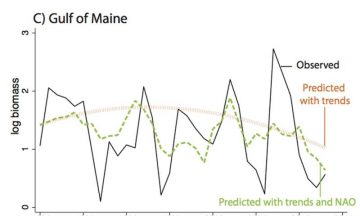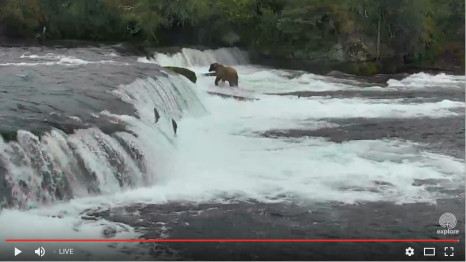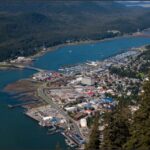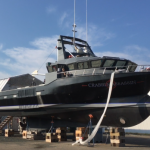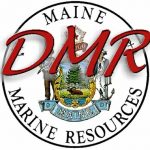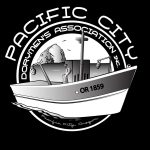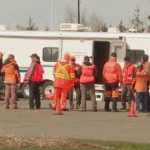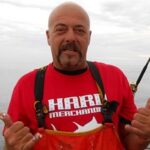Monthly Archives: July 2016
NRDC Enviro: Obama Administration is on the verge of weakening the nations fisheries regulations!
 The U.S. has been a global leader in confronting and effectively tackling the overexploitation of its ocean fisheries. While there’s work still be done—more than three dozen fish populations or stocks (out of 233) remain overfished—American fisheries today are among the most sustainable in the world. Yet, with the job unfinished, the Obama Administration is on the verge of weakening fisheries regulations. Last month, enviro 44 organizations wrote to the president opposing these rollbacks. The changes would represent the first significant weakening of the country’s ocean fisheries policy since 1996, when important conservation provisions were enacted into law. NOAA Fisheries, the agency that regulates U.S. fisheries, is proposing to revise the regulations that implement the Magnuson-Stevens Fishery Conservation and Management Act—the nation’s ocean fisheries law—saying that this will give managers more flexibility to handle current fishery management challenges. Read the rest here 19:39 Read this, National Marine Fisheries Service Proposes Weakening Magnuson-Stevens Act Regulations click here
The U.S. has been a global leader in confronting and effectively tackling the overexploitation of its ocean fisheries. While there’s work still be done—more than three dozen fish populations or stocks (out of 233) remain overfished—American fisheries today are among the most sustainable in the world. Yet, with the job unfinished, the Obama Administration is on the verge of weakening fisheries regulations. Last month, enviro 44 organizations wrote to the president opposing these rollbacks. The changes would represent the first significant weakening of the country’s ocean fisheries policy since 1996, when important conservation provisions were enacted into law. NOAA Fisheries, the agency that regulates U.S. fisheries, is proposing to revise the regulations that implement the Magnuson-Stevens Fishery Conservation and Management Act—the nation’s ocean fisheries law—saying that this will give managers more flexibility to handle current fishery management challenges. Read the rest here 19:39 Read this, National Marine Fisheries Service Proposes Weakening Magnuson-Stevens Act Regulations click here
Commercial fishers ‘gutted’ by govt reforms
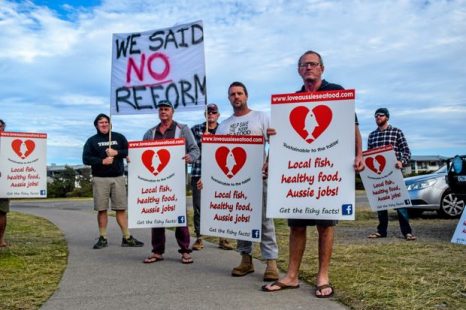 Commercial fishers gathered in Coffs Harbour from across the state in protest against fisheries reforms. More than 80 fishermen from Hawkesbury River to as far north as the Tweed rallied at the Jetty foreshores on Tuesday and Wednesday to garner public support to fight the reforms. Fishermen like Allan Bodycote, of the Clarence Valley, say the State Government’s Commercial Fisheries Business Adjustment Program will cripple their businesses because they will need to buy back their right to continue their current catch quotas. “We’ve got active fishers here who have been actively fishing up to 35 years in the game and come 2017, we believe we won’t have access to the shares to continue fishing because there is not enough shares to go around,” Mr Bodycote said. “We are buying our jobs back, how many times do you have to buy your job?” Read the rest here 17:04
Commercial fishers gathered in Coffs Harbour from across the state in protest against fisheries reforms. More than 80 fishermen from Hawkesbury River to as far north as the Tweed rallied at the Jetty foreshores on Tuesday and Wednesday to garner public support to fight the reforms. Fishermen like Allan Bodycote, of the Clarence Valley, say the State Government’s Commercial Fisheries Business Adjustment Program will cripple their businesses because they will need to buy back their right to continue their current catch quotas. “We’ve got active fishers here who have been actively fishing up to 35 years in the game and come 2017, we believe we won’t have access to the shares to continue fishing because there is not enough shares to go around,” Mr Bodycote said. “We are buying our jobs back, how many times do you have to buy your job?” Read the rest here 17:04
Louisiana seafood industry told to think beyond daily catch
 Leather made of tuna skin. Canned seafood marketed to tourists as souvenirs. Dried shrimp shells sold as a soup seasoning or used to extract chitin, a protein that has various agricultural, industrial and medical uses. Those were a few potential revenue generators for Louisiana’s seafood industry that were suggested Wednesday by Thor Sigfusson, an Icelandic entrepreneur who founded an incubator to connect businesses in the seafood industry. The effort, called the Iceland Ocean Cluster, focuses on developing innovative ideas within the fishing industry and new uses for the daily catch. “We have a scarcity of these natural proteins in the world, and these are absolutely the best proteins you can have,” Sigfusson told state leaders and seafood industry officials in New Orleans during a two-day visit. Read the story here 13:37
Leather made of tuna skin. Canned seafood marketed to tourists as souvenirs. Dried shrimp shells sold as a soup seasoning or used to extract chitin, a protein that has various agricultural, industrial and medical uses. Those were a few potential revenue generators for Louisiana’s seafood industry that were suggested Wednesday by Thor Sigfusson, an Icelandic entrepreneur who founded an incubator to connect businesses in the seafood industry. The effort, called the Iceland Ocean Cluster, focuses on developing innovative ideas within the fishing industry and new uses for the daily catch. “We have a scarcity of these natural proteins in the world, and these are absolutely the best proteins you can have,” Sigfusson told state leaders and seafood industry officials in New Orleans during a two-day visit. Read the story here 13:37
Marine Accident Investigation Branch reveals shocking UK fishermen death toll
 The UK’s fishing fleet is suffering from one of its deadliest periods in a decade with more deaths recorded here than in Alaskan waters where reality TV show the ‘Deadliest Catch’ is filmed. Nine fishermen’s lives have been lost at sea in the first six months of this year in six different incidents, a worryingly high figure for this stage in the year and there is concern this number could rise. Now more dangerous than Alaska, recognised for its treacherous waters as part of the reality television series ‘Deadliest Catch’, the UK has seen an increase of 29% on 2015 full year figures (seven fishermen lost their lives), as reported by the Marine Accident Investigation Branch (MAIB) today in its 2015 Annual Report. The MAIB’s Annual Report for 2015 comes as Seafish also warns that the summer months (June to September) are when commercial fishermen are more likely to have a non fatal accident which leads to major injury when working at sea. A common misperception is that these accidents are more likely to happen during bad weather during the winter months. Read the rest here 13:18
The UK’s fishing fleet is suffering from one of its deadliest periods in a decade with more deaths recorded here than in Alaskan waters where reality TV show the ‘Deadliest Catch’ is filmed. Nine fishermen’s lives have been lost at sea in the first six months of this year in six different incidents, a worryingly high figure for this stage in the year and there is concern this number could rise. Now more dangerous than Alaska, recognised for its treacherous waters as part of the reality television series ‘Deadliest Catch’, the UK has seen an increase of 29% on 2015 full year figures (seven fishermen lost their lives), as reported by the Marine Accident Investigation Branch (MAIB) today in its 2015 Annual Report. The MAIB’s Annual Report for 2015 comes as Seafish also warns that the summer months (June to September) are when commercial fishermen are more likely to have a non fatal accident which leads to major injury when working at sea. A common misperception is that these accidents are more likely to happen during bad weather during the winter months. Read the rest here 13:18
Ryan Cleary says Newfoundland and Labrador fishermen want him to set up a new union
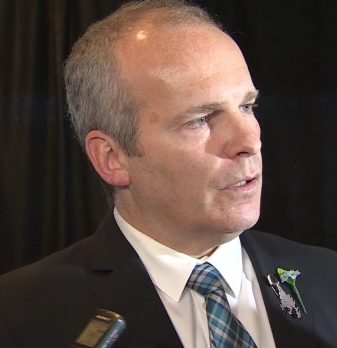 A former MP from Newfoundland and Labrador says fishermen are asking them to help organize a new union that would be a rival to the Fish, Food and Allied Workers union. Ryan Cleary says he’s never seen fish harvesters so angry and disillusioned with the FFAW, which currently represents them. “The common theme is that fishermen aren’t happy with the representation. In a lot of ways, the fishermen see the FFAW as having evolved into a corporation, more concerned with feeding itself than looking after the fishermen it’s charged with representing.” Cleary says fishermen have many reasons for wanting to break from the FFAW. He cites a recent lawsuit that scallop fishermen on the Northern Peninsula launched against the union over compensation money from Nalcor, which the fishermen won. Read the story here 11:44
A former MP from Newfoundland and Labrador says fishermen are asking them to help organize a new union that would be a rival to the Fish, Food and Allied Workers union. Ryan Cleary says he’s never seen fish harvesters so angry and disillusioned with the FFAW, which currently represents them. “The common theme is that fishermen aren’t happy with the representation. In a lot of ways, the fishermen see the FFAW as having evolved into a corporation, more concerned with feeding itself than looking after the fishermen it’s charged with representing.” Cleary says fishermen have many reasons for wanting to break from the FFAW. He cites a recent lawsuit that scallop fishermen on the Northern Peninsula launched against the union over compensation money from Nalcor, which the fishermen won. Read the story here 11:44
Sad News: Larry the Lobster has died on his journey home. (I think they killed ‘im!)
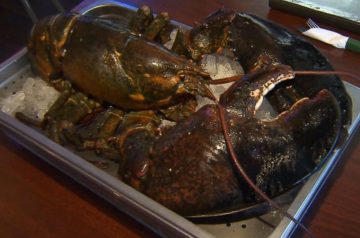 Larry the Lobster gained fame after it was spared from a boiling pot in Florida, but Maine officials say the crustacean didn’t make it to retirement. A rescue group had stepped forward to save the lobster after the restaurant owner called a TV station in Florida last week to show off the lobster’s unusual size. It was estimated to be between 60 and 110 years old. It’s not clear what killed the lobster. It was packed in a Styrofoam clamshell with seaweed and frozen gel packs. Watch the video showing how they packed him here 11:19
Larry the Lobster gained fame after it was spared from a boiling pot in Florida, but Maine officials say the crustacean didn’t make it to retirement. A rescue group had stepped forward to save the lobster after the restaurant owner called a TV station in Florida last week to show off the lobster’s unusual size. It was estimated to be between 60 and 110 years old. It’s not clear what killed the lobster. It was packed in a Styrofoam clamshell with seaweed and frozen gel packs. Watch the video showing how they packed him here 11:19
Salmon gillnetting to resume Aug. 7 in the Columbia River
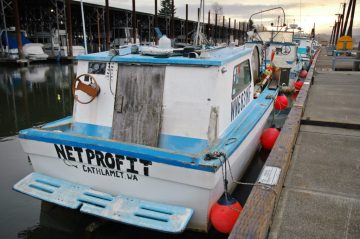 Nine nights of gillnetting in the lower Columbia River between Warrior Rock and Beacon Rock will begin Aug. 7. The commercial fleet will fish Sundays, Tuesdays and Thursdays from 9 p.m. to 6 a.m. through Aug. 26, according to regulations adopted today in Vancouver by the Columbia River Compact. Nine-inch-minimum-mesh nets will be required. Robin Ehlke, assistant Columbia River policy coordinator for the Washington Department of Fish and Wildlife, said the netters are projected to catch 2,200 fall chinook in the first week, 7,500 in the second week and 19,700 in the third week. Read the rest here 10:06
Nine nights of gillnetting in the lower Columbia River between Warrior Rock and Beacon Rock will begin Aug. 7. The commercial fleet will fish Sundays, Tuesdays and Thursdays from 9 p.m. to 6 a.m. through Aug. 26, according to regulations adopted today in Vancouver by the Columbia River Compact. Nine-inch-minimum-mesh nets will be required. Robin Ehlke, assistant Columbia River policy coordinator for the Washington Department of Fish and Wildlife, said the netters are projected to catch 2,200 fall chinook in the first week, 7,500 in the second week and 19,700 in the third week. Read the rest here 10:06
Growth And Diversity Mark 25 Years Of Fishermen’s Alliance
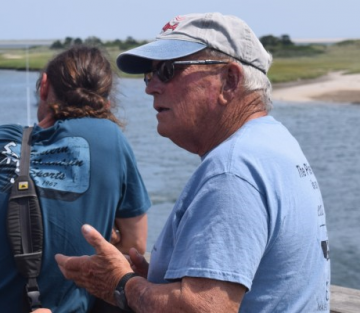 When local shellfishermen wanted help setting up a meeting with officials from the state division of marine fisheries to discuss changes in regulations governing quahog size, they turned to an unlikely source: The Cape Cod Commercial Fishermen’s Alliance. Until fairly recently, few would have made a connection between the Alliance and shellfish. Last year, however, the West Chatham-based organization invested in a 20 percent ownership stake in Aquaculture Researcher Corporation in Dennis, helping save a company that provides dozens of communities with seed shellfish and becoming a player in the Cape’s commercial shellfishing industry. The move is in many ways emblematic of how the Alliance has evolved and grown in the 25 years since it was founded as the Cape Cod Commercial Hook Fishermen’s Association. Read the rest here 09:20
When local shellfishermen wanted help setting up a meeting with officials from the state division of marine fisheries to discuss changes in regulations governing quahog size, they turned to an unlikely source: The Cape Cod Commercial Fishermen’s Alliance. Until fairly recently, few would have made a connection between the Alliance and shellfish. Last year, however, the West Chatham-based organization invested in a 20 percent ownership stake in Aquaculture Researcher Corporation in Dennis, helping save a company that provides dozens of communities with seed shellfish and becoming a player in the Cape’s commercial shellfishing industry. The move is in many ways emblematic of how the Alliance has evolved and grown in the 25 years since it was founded as the Cape Cod Commercial Hook Fishermen’s Association. Read the rest here 09:20
United Fishermen of Alaska launch survey for fishermen’s input on habitat
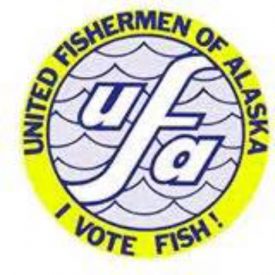 The United Fishermen of Alaska launched its Salmon Habitat Information Project on Tuesday in an effort to keep fishermen and the organization more connected with habitat information across the state. The initiative kicks off with a survey to gain more information from fishermen about habitat conditions in their home fishing grounds and how they would engage with the organization, said Lindsey Bloom, the program manager and a UFA board member. The survey asks fishermen about what conditions they observe in their local environments. One question asks about the words fishermen use to describe salmon habitat, from “spawning bed” to “open ocean,” and another asks how well the taker feels Alaska is managing its salmon populations. The other part is to touch base with how fishermen want to be engaged. As technology has changed, fishermen may use cell phones, text or email, so the UFA wants to stay updated on how to reach them. “We’re launching with the survey because we want to get a better idea of what fishermen really care about, where their strongest interests lie, and how they want to be engaged, and how do they want to be contacted,” Bloom said. Read the rest here 08:39
The United Fishermen of Alaska launched its Salmon Habitat Information Project on Tuesday in an effort to keep fishermen and the organization more connected with habitat information across the state. The initiative kicks off with a survey to gain more information from fishermen about habitat conditions in their home fishing grounds and how they would engage with the organization, said Lindsey Bloom, the program manager and a UFA board member. The survey asks fishermen about what conditions they observe in their local environments. One question asks about the words fishermen use to describe salmon habitat, from “spawning bed” to “open ocean,” and another asks how well the taker feels Alaska is managing its salmon populations. The other part is to touch base with how fishermen want to be engaged. As technology has changed, fishermen may use cell phones, text or email, so the UFA wants to stay updated on how to reach them. “We’re launching with the survey because we want to get a better idea of what fishermen really care about, where their strongest interests lie, and how they want to be engaged, and how do they want to be contacted,” Bloom said. Read the rest here 08:39
Where are the herring? Unalaska’s seine fishery remains on hold
 The commercial herring fishery is on hold in Unalaska — because no one can find the fish. The herring season opened more than a week ago. So far, fishermen haven’t had any luck, even with a spotter pilot searching from above. “There’s been no appreciable harvest at all,” said Frank Kelty on the Unalaska Fisheries Report. “The fish appear to be well offshore and in very deep water where the seiners can’t get to them.” Kelty said three or four seiners are registered to fish this season, while no one has registered to use gillnet gear. If the herring show up, Dutch Harbor fishermen will be able to harvest 2,166 tons. But until then, the seiners are on standby. Read the rest here Listen to the report here 08:01
The commercial herring fishery is on hold in Unalaska — because no one can find the fish. The herring season opened more than a week ago. So far, fishermen haven’t had any luck, even with a spotter pilot searching from above. “There’s been no appreciable harvest at all,” said Frank Kelty on the Unalaska Fisheries Report. “The fish appear to be well offshore and in very deep water where the seiners can’t get to them.” Kelty said three or four seiners are registered to fish this season, while no one has registered to use gillnet gear. If the herring show up, Dutch Harbor fishermen will be able to harvest 2,166 tons. But until then, the seiners are on standby. Read the rest here Listen to the report here 08:01
Worm harvesters angered by ANP enforcement actions
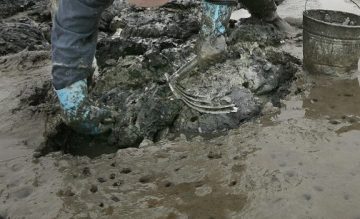 As Acadia National Park celebrates its 100th anniversary, a simmering dispute over worm and clam harvesting on the intertidal zone flats bordering park lands is coming to a boil.Last fall, a park ranger allegedly confiscated one digger’s clam harvest and summoned him for taking clams from the flats inside the park boundaries. This spring, another ranger forced a worm harvester to dump his day’s take of bloodworms and leave the flats or face a summons. Ellsworth worm digger Kenny Webber said he had started his day harvesting worms off Frazer Point and “worked around down by the old Navy base on Schoodic Point,” where he encountered the park ranger who made him return his take to the flats. “I lost a day’s pay,” Webber said. “I had a hundred dollars worth.” On Saturday, some two dozen members of the Independent Maine Marine Worm Harvesters Association met at Skeet Seavey’s ER Baits shop in Hancock to discuss what they see as a power grab by the park administration and to map out a response. “It’s a bad situation, the power the government’s trying to grab,” Hampden worm digger Peter Pellerin said. “We have to stand up.” Read the story here 21:30
As Acadia National Park celebrates its 100th anniversary, a simmering dispute over worm and clam harvesting on the intertidal zone flats bordering park lands is coming to a boil.Last fall, a park ranger allegedly confiscated one digger’s clam harvest and summoned him for taking clams from the flats inside the park boundaries. This spring, another ranger forced a worm harvester to dump his day’s take of bloodworms and leave the flats or face a summons. Ellsworth worm digger Kenny Webber said he had started his day harvesting worms off Frazer Point and “worked around down by the old Navy base on Schoodic Point,” where he encountered the park ranger who made him return his take to the flats. “I lost a day’s pay,” Webber said. “I had a hundred dollars worth.” On Saturday, some two dozen members of the Independent Maine Marine Worm Harvesters Association met at Skeet Seavey’s ER Baits shop in Hancock to discuss what they see as a power grab by the park administration and to map out a response. “It’s a bad situation, the power the government’s trying to grab,” Hampden worm digger Peter Pellerin said. “We have to stand up.” Read the story here 21:30
Akaka, Ariyoshi challenge expansion of Papahanaumokuakea National Marine Monument
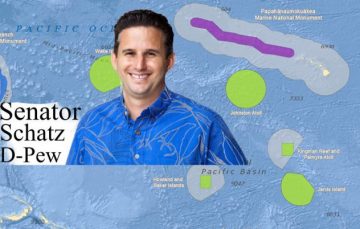 Government, community and business leaders rallied together at the state Capitol on Tuesday to address their opposition to the proposed expansion of a national marine monument. Among those who spoke at the rally were former Hawaii Gov. George Ariyoshi, former U.S. Sen. Daniel K. Akaka, D-Hawaii, Office of Hawaiian Affairs Trustee Peter Apo and other community and business organizations. On June 15, U.S. Sen. Brian Schatz, D-Hawaii, sent a proposal to President Barack Obama to expand Papahanaumokuakea, a fishing sanctuary and Marine National Monument, from 140,000 square miles to 583,000 square miles. If the expansion is implemented, PMNM will be the largest marine conservation in the world. During the rally, concerns against the expansion were shared that included the federal government’s rush to begin the project and the lack of effort in gathering the public’s opinion. “I feel it’s unconscionable for us to enact a new policy of expanding the Papahanaumokuakea without proper transparency,” Akaka said. “The people of Hawaii need to know what this is all about and they need to respond to it.” Read the rest here 19:53
Government, community and business leaders rallied together at the state Capitol on Tuesday to address their opposition to the proposed expansion of a national marine monument. Among those who spoke at the rally were former Hawaii Gov. George Ariyoshi, former U.S. Sen. Daniel K. Akaka, D-Hawaii, Office of Hawaiian Affairs Trustee Peter Apo and other community and business organizations. On June 15, U.S. Sen. Brian Schatz, D-Hawaii, sent a proposal to President Barack Obama to expand Papahanaumokuakea, a fishing sanctuary and Marine National Monument, from 140,000 square miles to 583,000 square miles. If the expansion is implemented, PMNM will be the largest marine conservation in the world. During the rally, concerns against the expansion were shared that included the federal government’s rush to begin the project and the lack of effort in gathering the public’s opinion. “I feel it’s unconscionable for us to enact a new policy of expanding the Papahanaumokuakea without proper transparency,” Akaka said. “The people of Hawaii need to know what this is all about and they need to respond to it.” Read the rest here 19:53
Critical Report into the sinking of the Fishing Vessel Majestic off Shetland
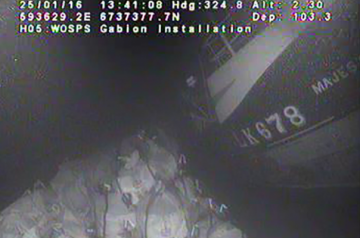 The Marine Accident Investigation Branch (MAIB) has found that the crew of Majestic did nothing to stop the flooding in the engine room prior to abandoning the vessel. In its report into the sinking off Shetland, it said that although the engine room’s bilge alarm sounded in the wheelhouse, it was not heard because the skipper and his brother were working on deck. The crew of the 16 metre wooden potter abandoned into a life raft and were rescued by a nearby fishing vessel. Neither of them were injured. Both were lifelong fishermen. Majestic subsequently drifted, and sank just two metres from a gas pipeline off the Point of Fethaland on 21 January 2016. Read the rest here 14:36
The Marine Accident Investigation Branch (MAIB) has found that the crew of Majestic did nothing to stop the flooding in the engine room prior to abandoning the vessel. In its report into the sinking off Shetland, it said that although the engine room’s bilge alarm sounded in the wheelhouse, it was not heard because the skipper and his brother were working on deck. The crew of the 16 metre wooden potter abandoned into a life raft and were rescued by a nearby fishing vessel. Neither of them were injured. Both were lifelong fishermen. Majestic subsequently drifted, and sank just two metres from a gas pipeline off the Point of Fethaland on 21 January 2016. Read the rest here 14:36
Athearn Marine Agency Boat of the Week: AMT Marine 55ft. Crabber, 440HP, 6 Cylinder Cummins
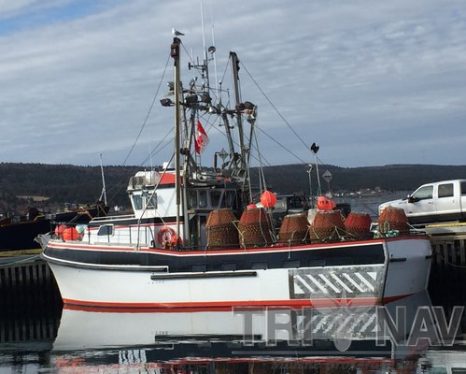 Specifications, information and 45 photo’s click here To see all the boats in this series, Click here 13:18
Specifications, information and 45 photo’s click here To see all the boats in this series, Click here 13:18
Recovery plan underway for fishing vessel abandoned by crew of 46
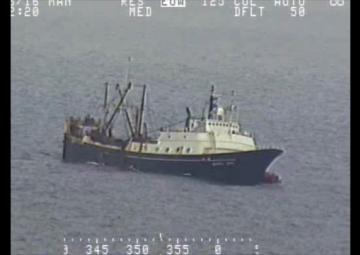 A fishing vessel abandoned by its crew of 46 in the Bering Sea when it took on water Tuesday remained afloat Wednesday morning as plans were made for a possible recovery, according to the U.S. Coast Guard. Lt. Joseph Schlosser, a command duty officer with the Coast Guard’s District 17 command center, said the Alaska Juris remained in the same area where it was abandoned at about noon Tuesday, more than 150 miles northwest of Adak in Alaska’s western Aleutian Islands. “She’s floating down by the bow, with a 5-degree list to port,” Schlosser said. The crew of the Alaska Juris reported flooding in the engine room Tuesday, then donned survival suits and left the ship in three rafts. Schlosser said a private company, Resolve Marine Group, has been contracted to recover the 229-foot trawler. The tugboat Resolve Pioneer is en route to the scene but not expected to arrive until Thursday. Read the story here 12:30
A fishing vessel abandoned by its crew of 46 in the Bering Sea when it took on water Tuesday remained afloat Wednesday morning as plans were made for a possible recovery, according to the U.S. Coast Guard. Lt. Joseph Schlosser, a command duty officer with the Coast Guard’s District 17 command center, said the Alaska Juris remained in the same area where it was abandoned at about noon Tuesday, more than 150 miles northwest of Adak in Alaska’s western Aleutian Islands. “She’s floating down by the bow, with a 5-degree list to port,” Schlosser said. The crew of the Alaska Juris reported flooding in the engine room Tuesday, then donned survival suits and left the ship in three rafts. Schlosser said a private company, Resolve Marine Group, has been contracted to recover the 229-foot trawler. The tugboat Resolve Pioneer is en route to the scene but not expected to arrive until Thursday. Read the story here 12:30
A shrimp apocalypse? Anything is possible, says DFO scientist
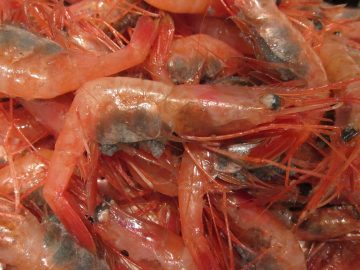 A scientist with the Department of Fisheries and Oceans is defending its bleak assessment of shrimp stocks off Newfoundland’s northeast coast and Labrador, and is blaming the resurgent codfish – which feed on shrimp – as a “driving factor.” Katherine Skanes is also firing back at those questioning the status of the stock. “When the biomass was going up, they had confidence in our survey. Then when the biomass goes down, they lose confidence,” she said. Jaws dropped this past spring after DFO’s annual northern shrimp assessment revealed that the “fishable” biomass in Area 6 had declined by a staggering 41 per cent between 2014 and 2015. DFO blames environmental conditions and predation for the decline. Read the story here 10:46
A scientist with the Department of Fisheries and Oceans is defending its bleak assessment of shrimp stocks off Newfoundland’s northeast coast and Labrador, and is blaming the resurgent codfish – which feed on shrimp – as a “driving factor.” Katherine Skanes is also firing back at those questioning the status of the stock. “When the biomass was going up, they had confidence in our survey. Then when the biomass goes down, they lose confidence,” she said. Jaws dropped this past spring after DFO’s annual northern shrimp assessment revealed that the “fishable” biomass in Area 6 had declined by a staggering 41 per cent between 2014 and 2015. DFO blames environmental conditions and predation for the decline. Read the story here 10:46
Diesel stove likely cause of boat fire
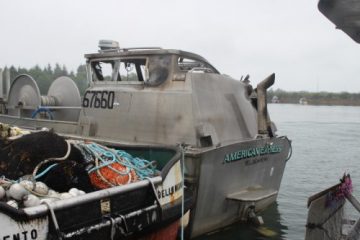 A 32-foot commercial fishing boat caught fire early Monday morning (07-25-16) in ANB Harbor. The F/V American Express, a gillnetter, was tied up on the outer side of the transient float. Fire Chief Dave Miller says the department received a 911 call at 1:04 AM. “The boat was totally involved. Everything in flames. We responded to that scene with two of our engines, engine 1 and ladder 2, and about ten of our volunteers responded also,” says Miller. When they arrived, Miller says the boat’s crew and others were already at work putting the fire out with the hoses on the dock. The American Express is owned by Bret Hanson and home ported in Bellingham, Washington. No one was aboard at the time of the blaze. Miller estimates the damages could total $100,000 or even more. Upon investigation, he believes the fire started as a result of a leaking diesel stove. Read the story here 08:50
A 32-foot commercial fishing boat caught fire early Monday morning (07-25-16) in ANB Harbor. The F/V American Express, a gillnetter, was tied up on the outer side of the transient float. Fire Chief Dave Miller says the department received a 911 call at 1:04 AM. “The boat was totally involved. Everything in flames. We responded to that scene with two of our engines, engine 1 and ladder 2, and about ten of our volunteers responded also,” says Miller. When they arrived, Miller says the boat’s crew and others were already at work putting the fire out with the hoses on the dock. The American Express is owned by Bret Hanson and home ported in Bellingham, Washington. No one was aboard at the time of the blaze. Miller estimates the damages could total $100,000 or even more. Upon investigation, he believes the fire started as a result of a leaking diesel stove. Read the story here 08:50
Bay of Fundy Fishermen taking Nova Scotia provincial government to court over the tidal industry
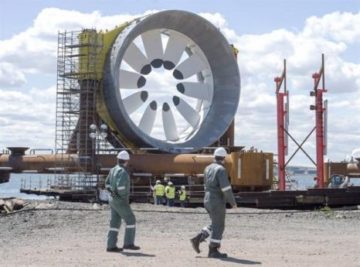 The Bay of Fundy Inshore Fishermen’s Association (BFIFA) filed a formal application July 25 asking the Nova Scotia Supreme Court to review and quash a decision by the provincial minister of Environment. In late June Margaret Miller approved the environmental effects monitoring program for the Fundy Ocean Research Centre for Energy (FORCE) and Cape Sharp Tidal Venture, effectively allowing the installation of two tidal turbines in the Minas Passage. Colin Sproul, fisherman and spokesperson with BFIFA, says the association is confident the court will recognize the same problems he sees with the minister’s decisions. “There is a wealth of information that was overlooked by the minister in making her decision,” said Sproul. “We are in a situation now where the province of Nova Scotia is involved in legal action against fishermen. Fishermen are on the side of conservation and the government is on the side of industry – this is a dangerous precedent for the environment of Nova Scotia.” Read the rest here 08:12
The Bay of Fundy Inshore Fishermen’s Association (BFIFA) filed a formal application July 25 asking the Nova Scotia Supreme Court to review and quash a decision by the provincial minister of Environment. In late June Margaret Miller approved the environmental effects monitoring program for the Fundy Ocean Research Centre for Energy (FORCE) and Cape Sharp Tidal Venture, effectively allowing the installation of two tidal turbines in the Minas Passage. Colin Sproul, fisherman and spokesperson with BFIFA, says the association is confident the court will recognize the same problems he sees with the minister’s decisions. “There is a wealth of information that was overlooked by the minister in making her decision,” said Sproul. “We are in a situation now where the province of Nova Scotia is involved in legal action against fishermen. Fishermen are on the side of conservation and the government is on the side of industry – this is a dangerous precedent for the environment of Nova Scotia.” Read the rest here 08:12
Video release: Coast Guard, good Samaritans rescue 46 mariners 690 miles west of Dutch Harbor, Alaska
Coast Guard Air Station Kodiak aircrews, along with good Samaritans, rescue 46 crew members from life rafts after they abandoned ship approximately 690 miles west of Dutch Harbor, Alaska, July 26, 2016. The 220-foot fishing vessel Alaska Juris began taking on water near Kiska Island. All 46 crew members were transferred to good Samaritan vessels Spar Canis and Vienna Express to be transported to Adak, Alaska. Click on photo. 07:20
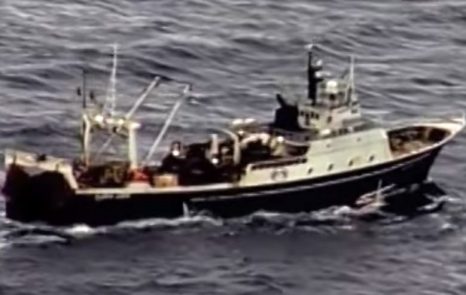
46 Crew members abandon sinking Fishing Vessel in Alaskan Waters
Two Good Samaritan ships were helping rescue 46 crew members who abandoned a sinking fishing vessel in Alaska’s Aleutian Island chain, Coast Guard officials said Tuesday. There were no reported injuries to the crew members, who had donned survival suits and then huddled in three large life rafts awaiting rescue after the 220-foot Alaska Juris started taking on water late Tuesday morning. The plan was to have the 46 people transfer to the Good Samaritan ships, the Spar Canis and the Vienna Express, Petty Officer Lauren Steenson said. The crew would be transported to a port, but she said it wasn’t immediately known where they would be taken. The Coast Guard also diverted the cutter Midgett and dispatched two C-130 transport planes and two helicopters from Kodiak to the site of the sinking ship, located near Kiska Island, which is about 690 miles west of Dutch Harbor, one of the nation’s busiest fishing ports. Read the story here 23:14
Four crew-members safe as Homer Seiner remains capsized off Alaska Peninsula
 Four crew-members escaped safely when their fishing boat rolled over near the Alaska Peninsula on Friday. “So just before 8 p.m. this past Friday, our district watch standers received an EPIRB alert of a 41-foot fishing vessel, Carmelina, located approximately 35 nautical miles west of Kodiak Island,” said U.S. Coast Guard Petty Officer Kelly Parker in Kodiak. “The vessel had capsized with four people on board. The crew of the good Samaritan vessel Spartan recovered all four people from the Carmelina, and all survivors were reported in good condition.” The Carmelina is owned by Willie Creamer of Homer, according to the state’s commercial fisheries database. Parker said the Carmelina remains capsized, with its seine net anchoring it to some rocks in Jute Bay. Read the rest here 21:53
Four crew-members escaped safely when their fishing boat rolled over near the Alaska Peninsula on Friday. “So just before 8 p.m. this past Friday, our district watch standers received an EPIRB alert of a 41-foot fishing vessel, Carmelina, located approximately 35 nautical miles west of Kodiak Island,” said U.S. Coast Guard Petty Officer Kelly Parker in Kodiak. “The vessel had capsized with four people on board. The crew of the good Samaritan vessel Spartan recovered all four people from the Carmelina, and all survivors were reported in good condition.” The Carmelina is owned by Willie Creamer of Homer, according to the state’s commercial fisheries database. Parker said the Carmelina remains capsized, with its seine net anchoring it to some rocks in Jute Bay. Read the rest here 21:53
Coast Guard rescue boat, helicopter crew rescue fisherman off Monomoy Island, Mass.
 Coast Guard Station Chatham and Air Station Cape Cod crews teamed up to rescue a fisherman Tuesday four miles east of Monomoy Island. A crewmember aboard the fishing boat Godzilla III sent a radio hail for help to watchstanders at Coast Guard Sector Southeastern New England. The crewmember reported a man aboard was experiencing chest pain and in need of immediate medical attention. A 42-foot response boat crew from Coast Guard Station Chatham, who were already underway in Lewis Bay for a law enforcement patrol, immediately diverted to meet up with Godzilla III. An MH-60 helicopter crew from Coast Guard Air Station Cape Cod was also diverted from their flight to help. Once on scene, the response boat crew took the man aboard the Coast Guard boat to make for a safer hoisting platform for medevac by helicopter. The aircrew hoisted the man into the helicopter and took him to Barnstable Municipal Airport, where his care was transferred to local emergency medical service personnel. Link 19:16
Coast Guard Station Chatham and Air Station Cape Cod crews teamed up to rescue a fisherman Tuesday four miles east of Monomoy Island. A crewmember aboard the fishing boat Godzilla III sent a radio hail for help to watchstanders at Coast Guard Sector Southeastern New England. The crewmember reported a man aboard was experiencing chest pain and in need of immediate medical attention. A 42-foot response boat crew from Coast Guard Station Chatham, who were already underway in Lewis Bay for a law enforcement patrol, immediately diverted to meet up with Godzilla III. An MH-60 helicopter crew from Coast Guard Air Station Cape Cod was also diverted from their flight to help. Once on scene, the response boat crew took the man aboard the Coast Guard boat to make for a safer hoisting platform for medevac by helicopter. The aircrew hoisted the man into the helicopter and took him to Barnstable Municipal Airport, where his care was transferred to local emergency medical service personnel. Link 19:16
Australian Southern bluefin tuna boom reaps reward for east coast fishermen
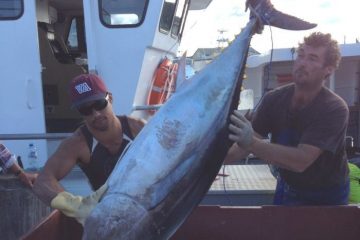 Southern bluefin tuna fishermen along the east coast are making the most of a booming Japanese market. Aquaculture quotas in South Australia are being leased to the east coast long-line fishery as it proves more efficient and profitable. Australian Southern Bluefin Tuna Association chief executive Brian Jeffries said operators were cashing in on the rejuvenated fishery and South-East Asia demand. “The catch on the east coast of southern bluefin has gone from 30 tonnes about three to four years ago to almost 600 tonnes this year,” he said. “That’s a major diversification of the use of the quota from fish farming in South Australia to long lining on the east coast.” The shift from aquaculture to wild-caught tuna is driven by profitability, as well as a relaxation over the regulation around the way catch quota can be distributed. Read the rest here 18:59
Southern bluefin tuna fishermen along the east coast are making the most of a booming Japanese market. Aquaculture quotas in South Australia are being leased to the east coast long-line fishery as it proves more efficient and profitable. Australian Southern Bluefin Tuna Association chief executive Brian Jeffries said operators were cashing in on the rejuvenated fishery and South-East Asia demand. “The catch on the east coast of southern bluefin has gone from 30 tonnes about three to four years ago to almost 600 tonnes this year,” he said. “That’s a major diversification of the use of the quota from fish farming in South Australia to long lining on the east coast.” The shift from aquaculture to wild-caught tuna is driven by profitability, as well as a relaxation over the regulation around the way catch quota can be distributed. Read the rest here 18:59
Brooks Falls – Katmai National Park, Alaska – Click to watch live!
You are watching exclusive LIVE footage from Alaska’s Brooks River in Katmai National Park. Every year over a hundred Brown Bears descend on a mile long stretch of Brooks River to feast on the largest Sockeye Salmon run in the world. 14:53
Gaspereau River fishermen worried the fish may not make it up the river if turbines are in the water
 Some fishermen along the Gaspereau River are concerned how tidal turbines could affect a local fishery. There are 14 active square net licences in the Gaspereau and Melanson area issued by the Department of Fisheries and Oceans. Those fishermen catch Gaspereau, a species of herring, when they swim up the river from the Bay of Fundy in April and May. On Monday night at the Gaspereau Community Hall, people in the area had their chance to speak to FORCE (Fundy Ocean Research Center for Energy), the organization behind the tidal turbine project. “We want to have some meaningful dialogue with Cape Sharp and FORCE about this project they’re undertaking,” said Chris Gertridge, with the Gaspereau Fishermen’s Association. “We have a lot of questions as to why we’re never consulted.” Read the rest here 14:24
Some fishermen along the Gaspereau River are concerned how tidal turbines could affect a local fishery. There are 14 active square net licences in the Gaspereau and Melanson area issued by the Department of Fisheries and Oceans. Those fishermen catch Gaspereau, a species of herring, when they swim up the river from the Bay of Fundy in April and May. On Monday night at the Gaspereau Community Hall, people in the area had their chance to speak to FORCE (Fundy Ocean Research Center for Energy), the organization behind the tidal turbine project. “We want to have some meaningful dialogue with Cape Sharp and FORCE about this project they’re undertaking,” said Chris Gertridge, with the Gaspereau Fishermen’s Association. “We have a lot of questions as to why we’re never consulted.” Read the rest here 14:24
Minister defends LIFO decision, northern shrimp stocks under pressure linked to rebounding cod stock
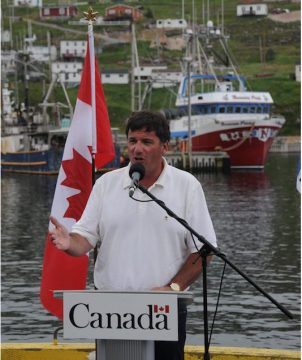 The federal fisheries minister stands by his recent decision to scrap the Last In, First Out policy and reduce the northern shrimp quota, while also indicating some news is on the way concerning northern cod. Speaking with reporters in Bay de Verde Monday following an announcement about funding for small craft harbours, Dominic LeBlanc said he worked with the information he had and consulted with federal and provincial politicians before electing to scrap LIFO. The decision fell in line with the recommendation of an advisory panel that consulted with the public and presented a report to the minister. Later when asked by The Compass about the potential return of a groundfish harvest, LeBlanc acknowledged he has received some advice suggesting areas where northern shrimp stocks are under pressure can be linked to a rebounding cod stock. Read the rest here 10:41
The federal fisheries minister stands by his recent decision to scrap the Last In, First Out policy and reduce the northern shrimp quota, while also indicating some news is on the way concerning northern cod. Speaking with reporters in Bay de Verde Monday following an announcement about funding for small craft harbours, Dominic LeBlanc said he worked with the information he had and consulted with federal and provincial politicians before electing to scrap LIFO. The decision fell in line with the recommendation of an advisory panel that consulted with the public and presented a report to the minister. Later when asked by The Compass about the potential return of a groundfish harvest, LeBlanc acknowledged he has received some advice suggesting areas where northern shrimp stocks are under pressure can be linked to a rebounding cod stock. Read the rest here 10:41
Queensland fishers see red over fisheries management green paper
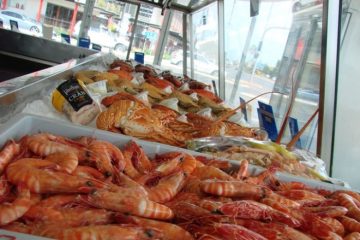 The Queensland Government has put forward its vision for the future of the state’s fisheries amid industry concerns the most significant reforms in two decades are being stymied due to a lack of funds and political will. The Queensland Seafood Industry Association (QSIA) said the release of a green paper was a ‘longtime coming’ and lacked the technical and policy detail to address the regulatory reforms promised to commercial fishers. A comprehensive fisheries management review and report was completed in 2014 by independent consultants, M-RAG Asia Pacific, after consultation meetings at 20 ports around Queensland. Fisheries minister Leanne Donaldson has defended the delay in overhauling Queensland’s ‘cumbersome and inefficient’ fisheries management regime. Two audio clips, read the rest here 10:00
The Queensland Government has put forward its vision for the future of the state’s fisheries amid industry concerns the most significant reforms in two decades are being stymied due to a lack of funds and political will. The Queensland Seafood Industry Association (QSIA) said the release of a green paper was a ‘longtime coming’ and lacked the technical and policy detail to address the regulatory reforms promised to commercial fishers. A comprehensive fisheries management review and report was completed in 2014 by independent consultants, M-RAG Asia Pacific, after consultation meetings at 20 ports around Queensland. Fisheries minister Leanne Donaldson has defended the delay in overhauling Queensland’s ‘cumbersome and inefficient’ fisheries management regime. Two audio clips, read the rest here 10:00
Undercover sting operation off Sandwich nets alleged Striped Bass poachers
On Sunday night a small fleet of four boats motored out into Cape Cod Bay. The 50-foot  patrol boat Thomas Paine, two smaller patrol boats and an undercover surveillance vessel joined a much larger fleet of well over 60 vessels fishing on a striped bass hot spot off Scorton Creek in Sandwich some time before midnight. Environmental Police were acting on tips from commercial and recreational striped bass fishermen that commercial fishermen were engaging in a practice called front loading, catching striped bass in advance of midnight on Mondays and Thursdays and storing them on board their vessel to sell as if they’d caught them the next day. Five commercial fishermen from the Cape and one from Belchertown were fined more than $1,000 in total, according to Moran. A total of $3,000 in fishing gear was confiscated. The fishermen were given civil citations for fishing during a commercial striped bass closure, possession of striped bass without a clipped fin and possession of an amount of fish over the daily limit for recreational fishermen. Read the story here 09:08
patrol boat Thomas Paine, two smaller patrol boats and an undercover surveillance vessel joined a much larger fleet of well over 60 vessels fishing on a striped bass hot spot off Scorton Creek in Sandwich some time before midnight. Environmental Police were acting on tips from commercial and recreational striped bass fishermen that commercial fishermen were engaging in a practice called front loading, catching striped bass in advance of midnight on Mondays and Thursdays and storing them on board their vessel to sell as if they’d caught them the next day. Five commercial fishermen from the Cape and one from Belchertown were fined more than $1,000 in total, according to Moran. A total of $3,000 in fishing gear was confiscated. The fishermen were given civil citations for fishing during a commercial striped bass closure, possession of striped bass without a clipped fin and possession of an amount of fish over the daily limit for recreational fishermen. Read the story here 09:08






